Most poultry farmers who keep layers are familiar with white and brown eggs.
But, do you know that some chickens lay colored eggs? In such cases, the eggshell can be pink, blue, or green.
The genetic composition is the primary factor that affects the color of eggs produced by a chicken.
Since each breed has its unique genes, some, like the Araucana, Easter Egger, Maran, Ice Cream Egger, Barred, Dorking, and so on, lay colored eggs.
The most significant advantage of colored eggs is their visual appeal.
Your customers are more likely to be drawn by the array of colors, increasing the demand for such eggs.
That said, these eggs have the same taste and nutrient composition as the typical tan and white eggs.
How Do Chicken Lay Colored Eggs?
The process of egg formation takes approximately 26 hours, of which 20 are required to form the shell.

It’s worth noting that all eggs, regardless of the parent’s breed, start as white. This is because the primary mineral used in the process is calcium.
As shell formation continues, the hen secretes porphyrins from its uterus to give a distinct color to the shell.
The timing of this secretion is what defines the final color of the eggshell.
Blue porphyrin pigments are often the first to be released, explaining why blue eggs are blue both inside and outside.
The second pigment to be secreted is brown, which produces green eggshells with blue insides when it mixes with blue.
Key Takeaway: Chickens that lay white eggs don’t secrete porphyrins at all.
Type of Chickens That Lay Colored Eggs
If you want to make your egg collection routine more colorful, here are some breeds you should consider rearing.
What Chickens Lay Blue Eggs?
Of all colored eggs, blue eggs probably have the highest demand since many people find them visually appealing.
The chickens that can add blue color to your collection include Araucana, Ameraucana, Cream Legbar, Easter Eggers, and the Whiting True Blue.
Araucana
This breed draws its name from the Araucana region in Chile, the place where it supposedly originated.
Besides laying beautiful blue eggs, these chickens have an attractive appearance, primarily because of the tufts of feathers located close to their ears.

They are also rumpless, meaning that they lack a tail head. (The gene that causes these characteristics is lethal, explaining why Araucana is a rare breed).
It’s worth noting that this is the only breed that lays blue eggs consistently.
You can leave them to roam about or place them in confinement, though free-roaming is better because they can find their preferred foods.
Ameraucana
Ameraucana results from a genetic modification of the Araucana created to remove the lethal gene that causes the tufts and rumpless traits.
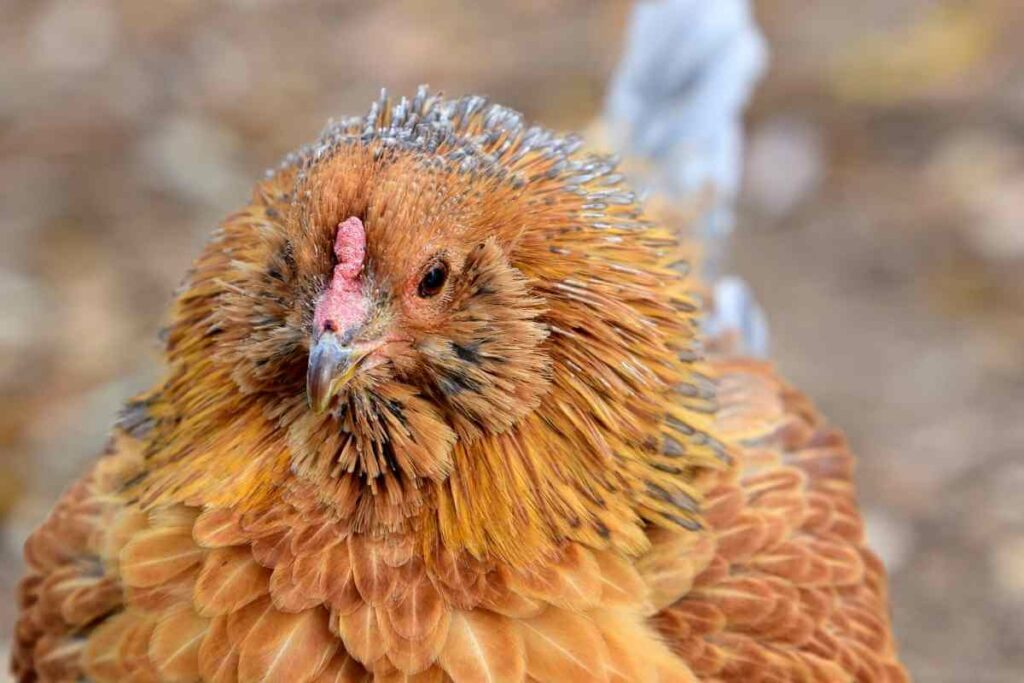
Its most distinctive features include muffs around the ears and sometimes a beard.
Like Araucana, this breed can withstand many environments, except for those with excessive heat.
Their appearance is similar to hawks, a characteristic that deters attacks from predatory bird species. Regarding temperament, they are docile and non-aggressive.
Cream Legbar
A native of Britain, the Cream Legbar isn’t as famous as other blue egg layers in the United States.
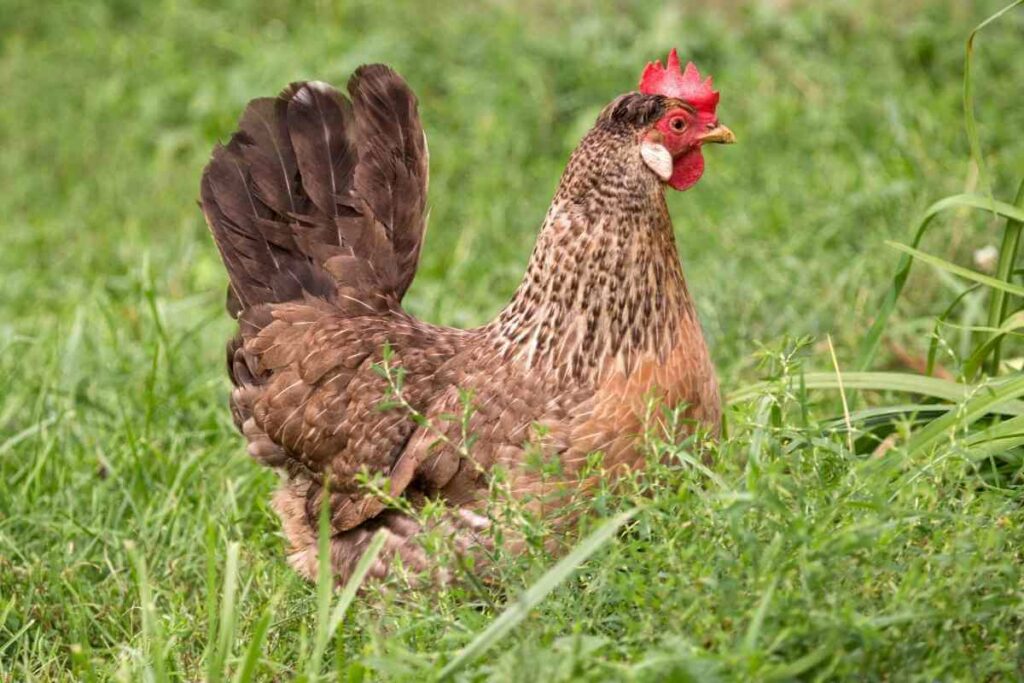
This is because most poultry farmers are still trialing its adaptability and benefits.
So far, the breed has proven that it lays eggs consistently and is friendly to its handlers.
More Importantly: It’s always vigilant and wary of predators, meaning that they are less likely to get attacked by hawks and eagles.
Easter Eggers
Although most Easter Eggers lay blue eggs, some don’t because this is a hybrid breed.
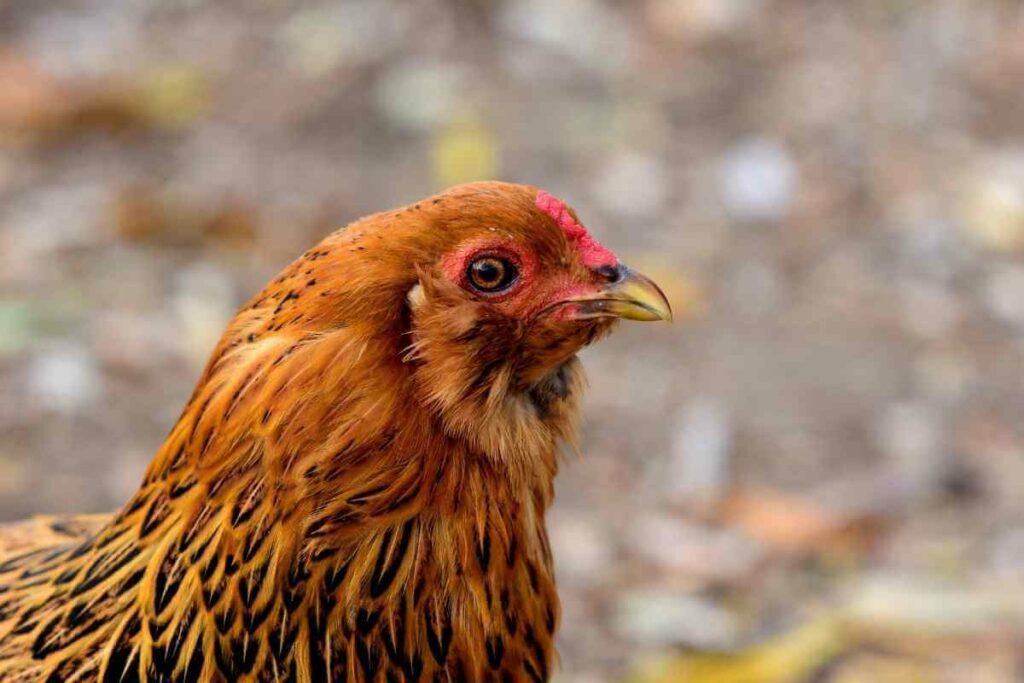
If you keep this species, you’re likely to find some green, pink, and even brown eggs in your egg basket.
Also, their eggs tend to be larger than those from other breeds.
Whiting True Blue
This breed was created by Dr. Tom Whiting, a scientist who wanted a rooster with large hackle feathers to use as bait for fly-fishing.
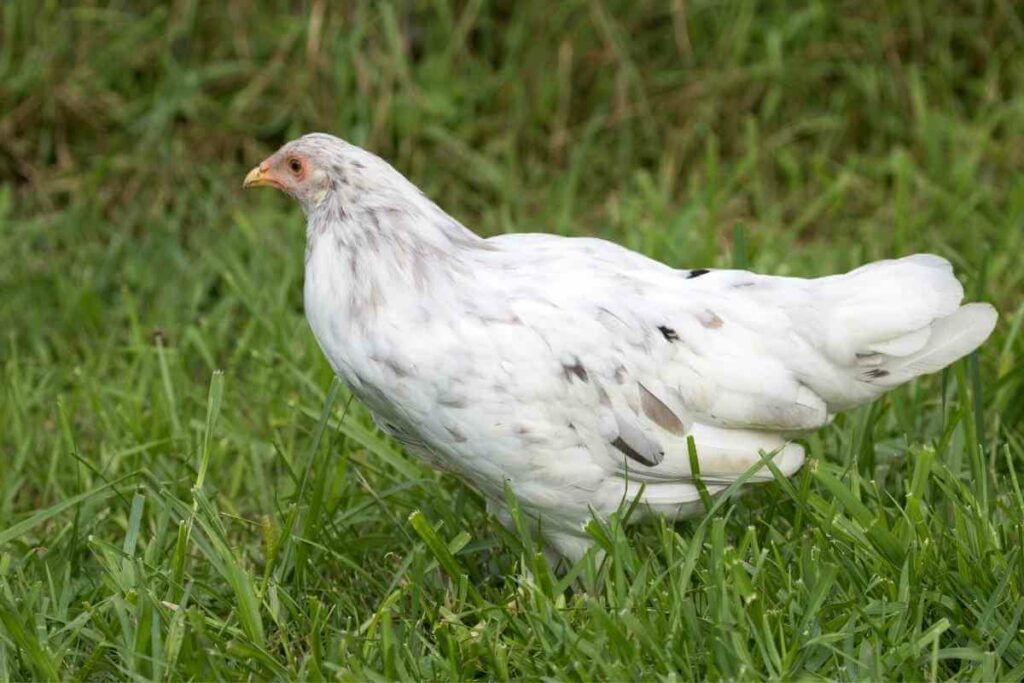
He also desired to breed chickens that consistently lay blue eggs.
Interestingly, this is the most productive blue egg layer, as it can lay up to 300 eggs yearly.
After hatching, this species takes only five months to start laying eggs.
What Chickens Lay Brown Eggs?
Chickens that lay brown eggs include Brahma, Buckeye, Jersey Giant, Maran, and Rhode Island Red.
Brahma
Many people regard Brahma as a superior chicken breed because of its strength and weight, as high as 18 pounds.

What’s more, these birds lay their eggs between October and May, a period in which most species stop laying eggs because of cold weather.
This species is available in three colors:
- dark
- buff
- and light
Of these, the dark variants are the rarest.
Their hens are black and gray, with a black tail and white-tipped hackles.
On the other hand, roosters have black and white plumage and a black-tipped tail.
Whether roaming freely or in confinement, Brahma chickens are highly adaptable to cold weather.
That said, they have poor heat tolerance. Their large body size also means that they can’t fly over low barriers, making them easy to handle.
Few People Know: Brahma hens can lay up to 220 medium to large-sized eggs yearly.
Buckeye
The Buckeye is among the chicken breeds which is on the brink of extinction.
It was developed by Nettie Metcalf, a scientist who intended to create a species that could withstand cold weather.
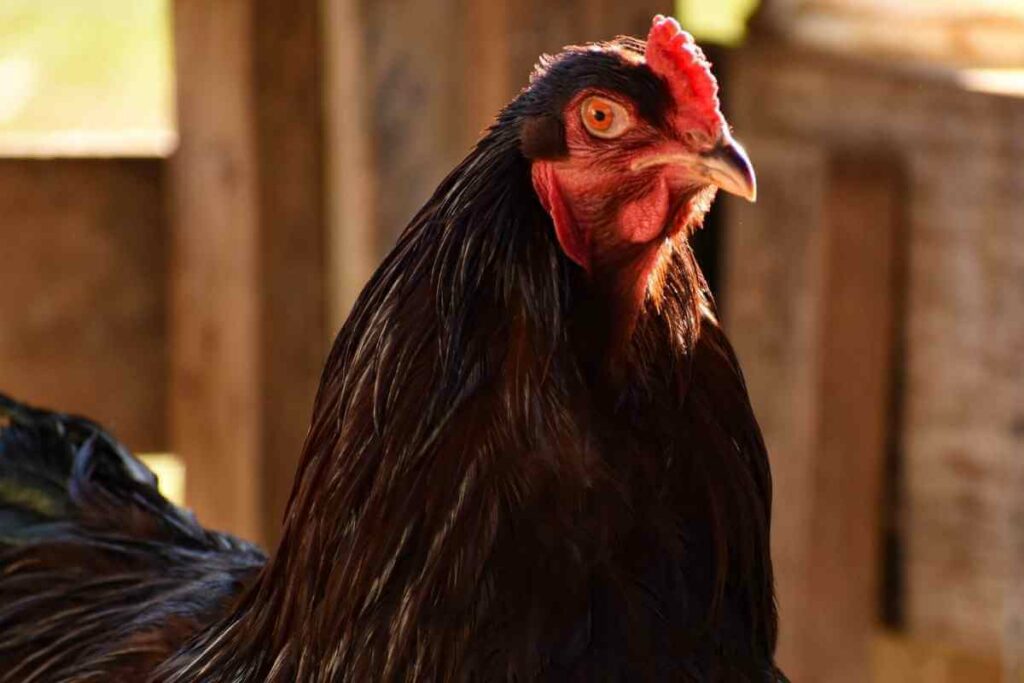
The breed can survive various climates and also prefers free-roaming because of its high activity level.
Every year, a Buckeye hen can lay up to 200 medium-sized eggs.
They can help you deal with mice on your farm by eating them, serving a similar purpose as cats.
Jersey Giant
The Jersey Giant is renowned for its friendliness and grows into one of the largest purebred species in the US.
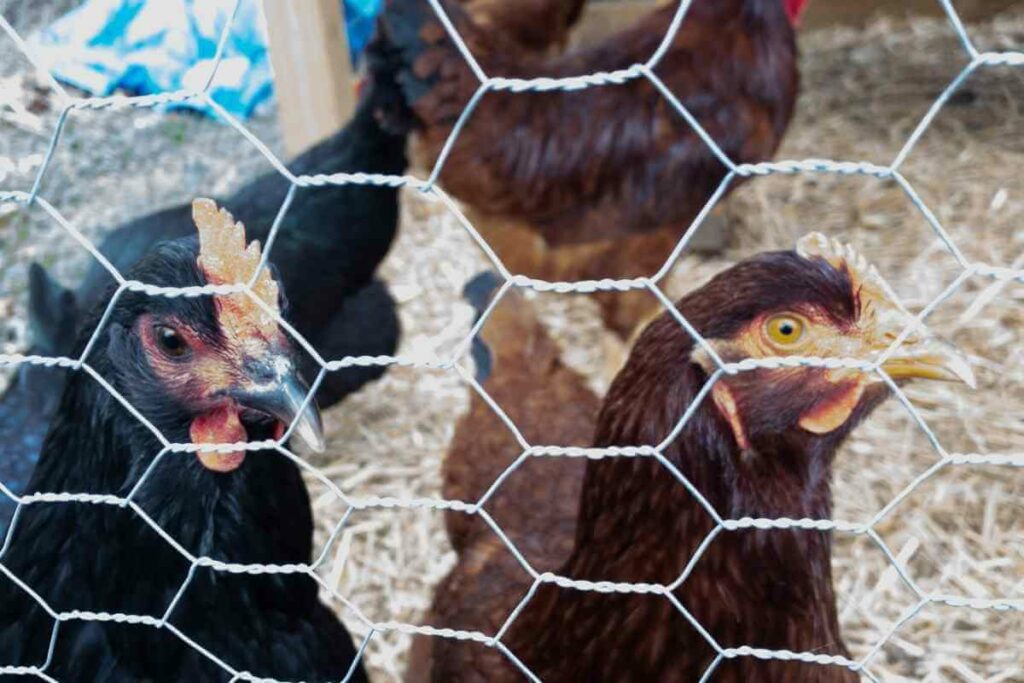
Due to their large size, they remain productive in cold weather conditions. They also prefer roaming to being kept in confinement.
On average, this chicken can lay 260 large eggs yearly.
However, it would help to feed them with extra amounts of minerals and vitamins to achieve this feat.
Maran
Maran eggs are a favorite of many chefs because of their tastiness.
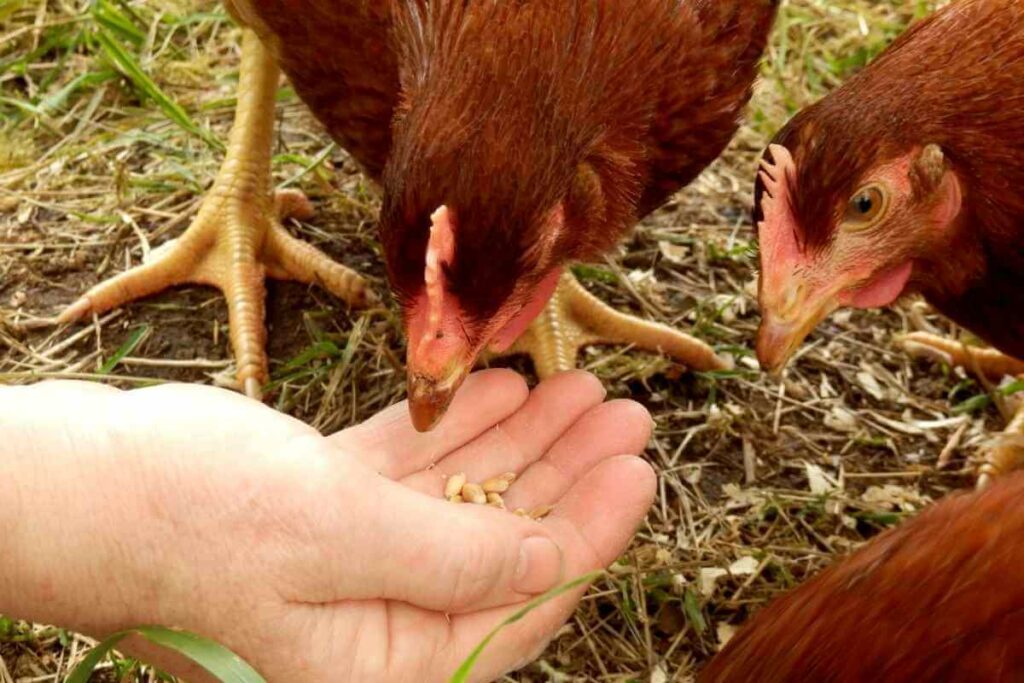
This species is available in color variations, including:
- black
- black copper
- black-tailed buff
- birchen
- Columbian
- cuckoo
- golden cuckoo
- wheaten
- white
Of these, the most common is the black copper Maran.
Some Maran chickens can survive cold conditions because they originate from marshlands.
However, this property isn’t consistent among some other breeds due to rapid and careless reproduction.
The most distinctive features of the Maran are its orange eyes, dark barred plumage, and white skin. Their soles are also white.
These birds can lay up to 150 large eggs yearly.
Notably: The eggs are dark brown in the first few months, but the color fades as time goes on.
Rhode Island Red
Due to its ability to withstand all weather conditions, the Rhode Island Red is one of the world’s most successful chicken breeds.

However, its combs are vulnerable when exposed to frostbite.
This breed requires little maintenance, making it ideal for small-scale farmers.
It can produce up to 200 eggs yearly, as it lays at least times weekly.
What Chickens Lay Green Eggs?
Most green egg layers are newly introduced breeds that are yet to gain popularity among poultry farmers.
As mentioned earlier, green eggshells come through when blue and porphyrins mix.
The blue pigments sip through the shell, meaning that green eggs are blue inside.
Some breeds that lay green eggs include the Favaucana, Ice Cream Bar, Olive Egger, and Silverudd Blue.
Favaucana
The Favaucana is a crossbreed of the Ameraucana and Favorelle chickens.
This breed can excel in cold conditions, but it’s uncomfortable in extreme heat.

Ideally, you should confine them in a nesting box and allow a few hours of free-roaming daily.
Concerning physical appearance, these birds have beards, muffs, and feathered feet.
They also have pea combs that contribute to their ability to withstand cold weather. Additionally, they look like hawks, reducing their susceptibility to predatory attacks.
Under the right conditions, this species can lay up to 260 eggs yearly. The colors vary from sage green to seafoam green.
Ice Cream Bars
Ice Cream Bars are a crossbreed of the Cream Legbar and Silverudd Blues.
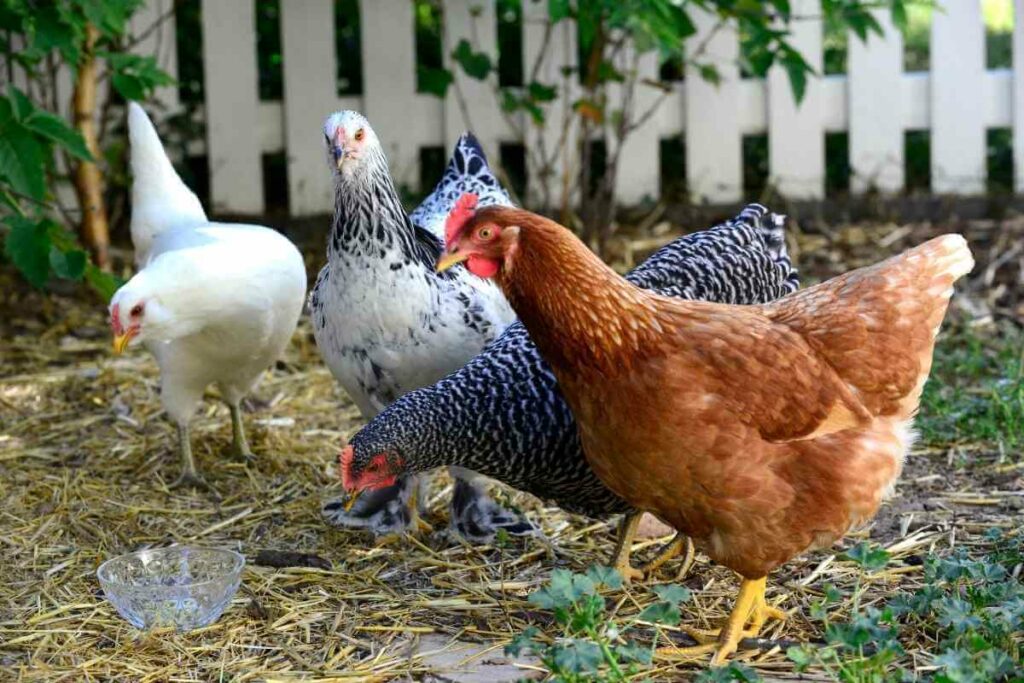
Like their parent species, these chickens are rare. They are available in several colors, but all have beards and red combs.
If you want this breed to be productive, it would be best to let them roam freely.
This Way: You’ll be guaranteed at least 180 to 200 eggs yearly.
Olive Egger
Like other green egg layers, the Olive Egger is a hybrid of the Ameraucana and the Maran.
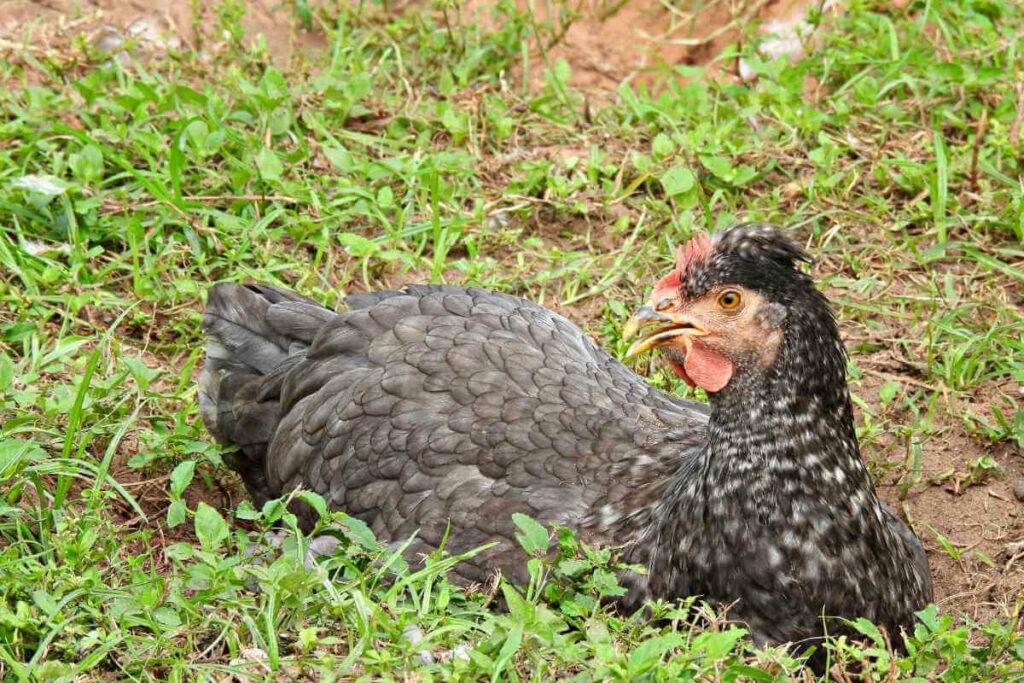
It can lay up to 200 eggs yearly, but this isn’t consistent, as it is a crossbreed.
This breed is friendly to its handlers, though the roosters tend to be overly protective of their flock.
You’ll need to feed them frequently, as they have a voracious appetite.
Silverudd Blue
This breed draws its name from its creator, Martin Silverudd, a Swedish monk who had a passion for auto-sexing chickens that laid colored eggs.
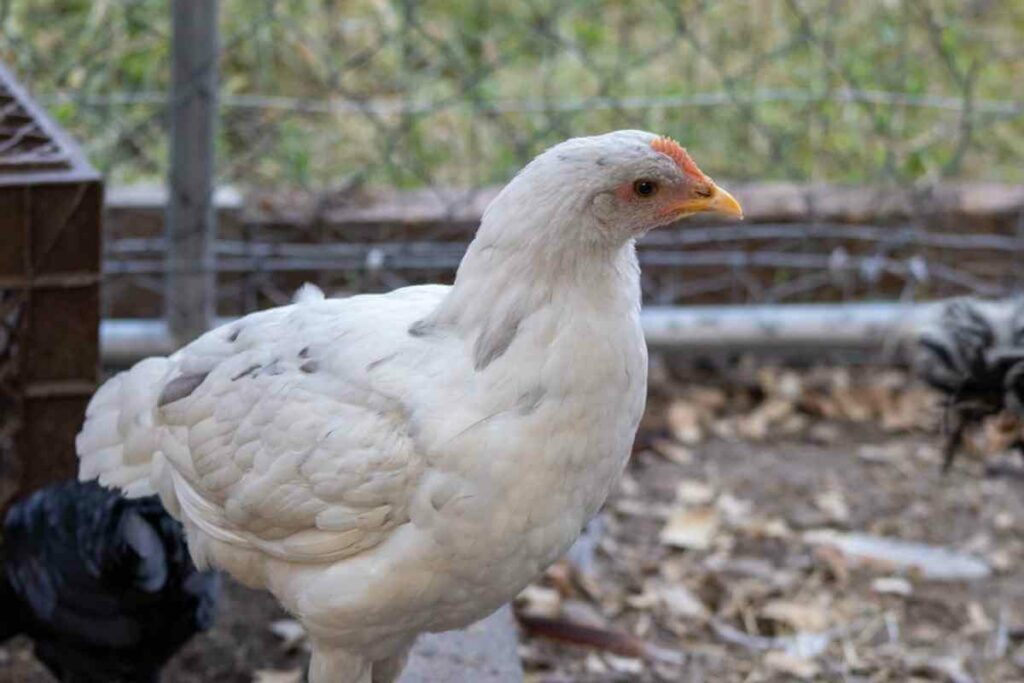
To this date, this is the only purebred species that lays green eggs.
Generally, Silverudd Blues are docile and friendly.
However, this changes if you provoke them. They become fierce and defend themselves, especially the roosters.
This breed excels in all conditions, whether hot or cold, and can produce between 150 and 200 eggs yearly.
These eggs are available in various shades of green and can be speckled brown sometimes.
What Chickens Lay Pink Eggs?
The chicken breeds that lay pink eggs include the Barred Rock, Dorking, Faverolles, and the Light Sussex.
Barred Rock
Barred Rock chickens are so-called because of the appearance of their plume.
They have a unique barred gray pattern on their feather that looks like rocks. Their body is triangular, with a lone red comb above the head.
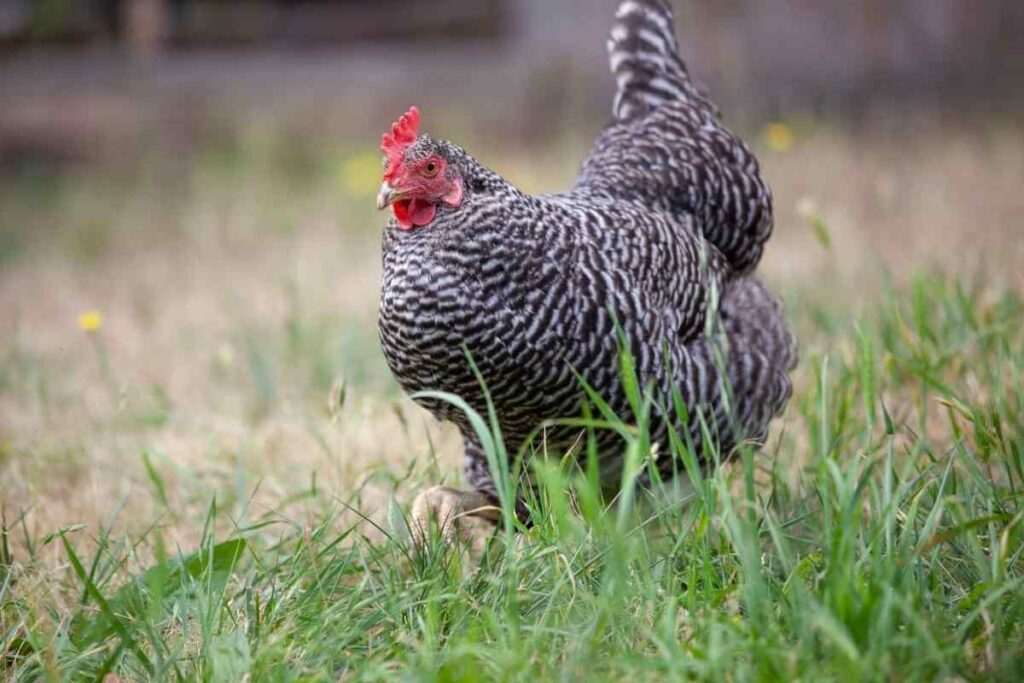
Interestingly, male and female birds have differing weather tolerance.
While hens can survive in cold conditions, roosters are vulnerable to frostbite. Both sexes don’t like regions with hot temperatures.
You can allow them to roam freely or keep them in an enclosed area, but the former increases their productivity.
A healthy Barred Rock hen can lay up to 280 eggs yearly.
Dorking
Dorking chickens have a rectangular body and short five-toed legs, features that help farmers distinguish them from other breeds.
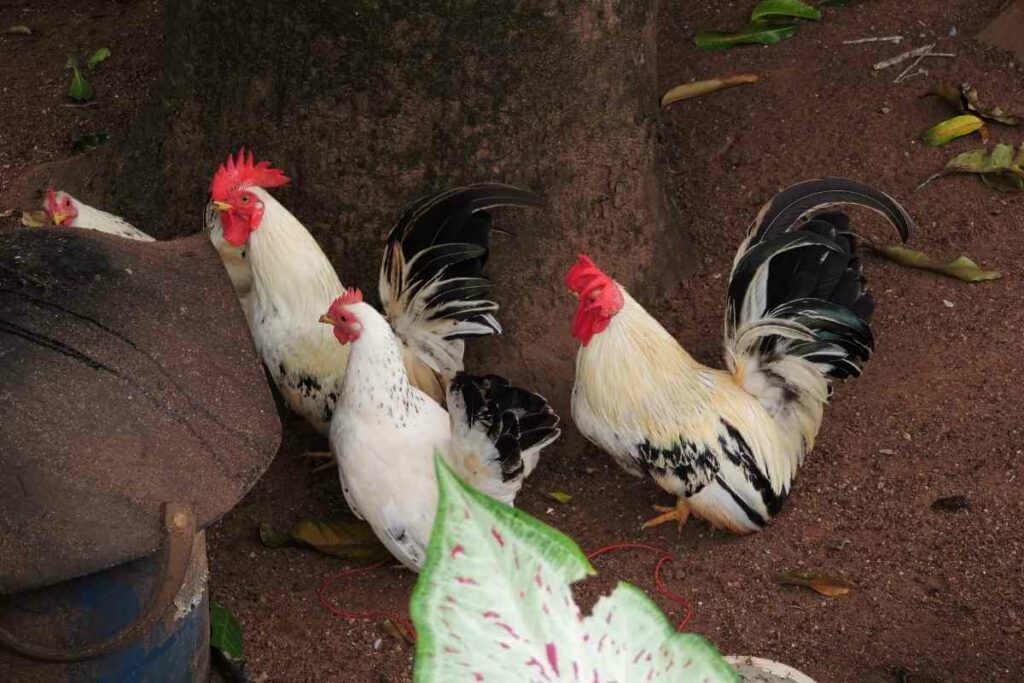
They are available in five colors:
- namely cuckoo
- dark
- red
- silver-gray
- white
Since they adapt well to cold weather, these chickens lay eggs throughout the year, including the winter months when other breeds stop producing eggs.
On Average: They can produce up to 190 medium-sized eggs yearly.
Faverolles
Faverolles originate from the Normandy region in France.
They have fluffy feathers that make them appear bigger than they are.
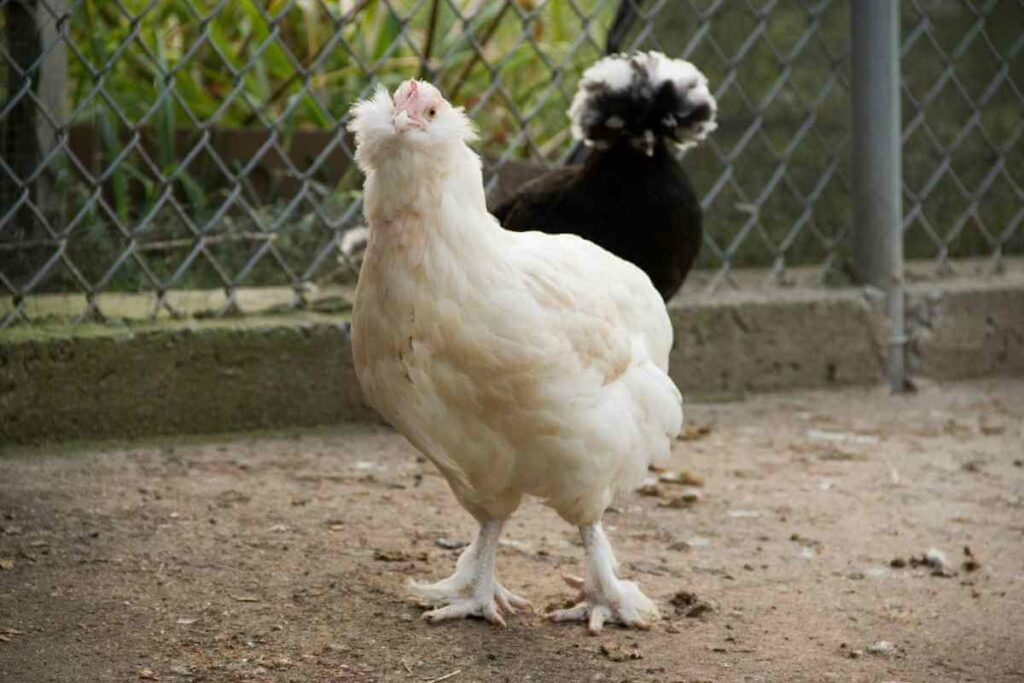
Also, their eyes are red, and their beaks are a tinge of pink. Roosters are primarily black, while the hens have gray fluff and salmon-colored feathers.
This breed usually produces between 180 and 240 eggs yearly.
They are particularly popular because of their friendliness to human beings.
Light Sussex
Having been discovered over two centuries ago, the Light Sussex is one of the world’s oldest chicken breeds.
It is the perfect choice for novice poultry farmers since it requires little maintenance.
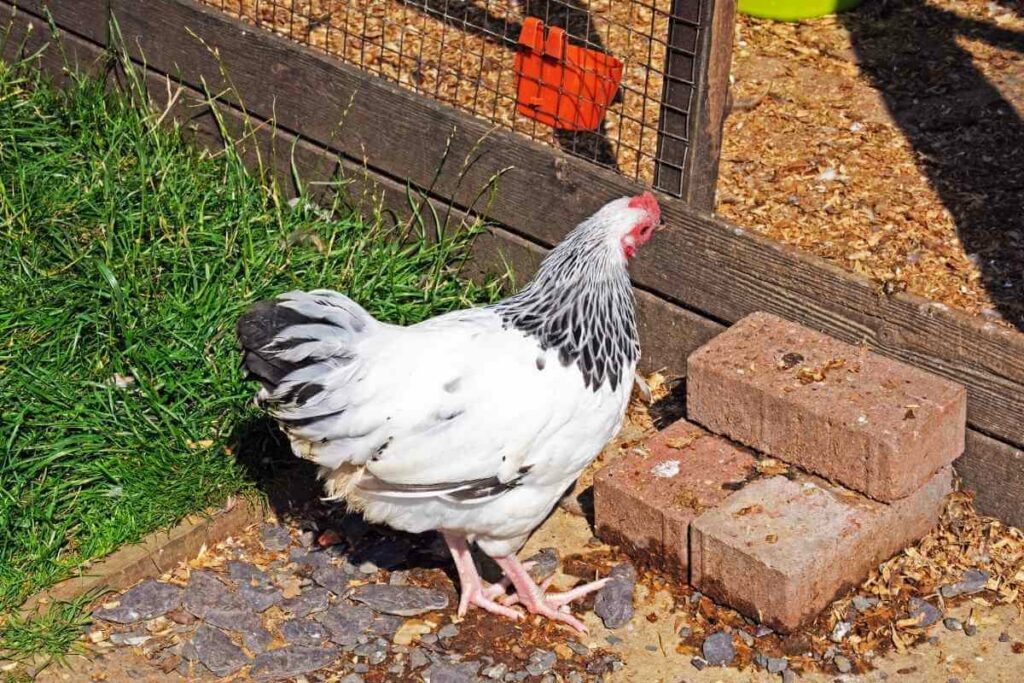
All strains have large, red earlobe, a single comb, and white legs.
This species’ tolerance to cold weather means that they lay eggs throughout the year, reaching a maximum of 250 pieces under the right conditions.
That said, they prefer cooler days to hot ones.
Wrapping Up
Colored eggs might seem strange to someone who isn’t familiar with several chicken breeds.
However, they are a reality caused by genetic differences across various species.
Some are even a result of scientific research conducted by poultry enthusiasts.
Despite their unique appearance, colored eggs taste and have the same nutrients as typical eggs.
The concentrations of nutrient levels may vary depending on the chicken’s diet and health, but this rarely occurs.


